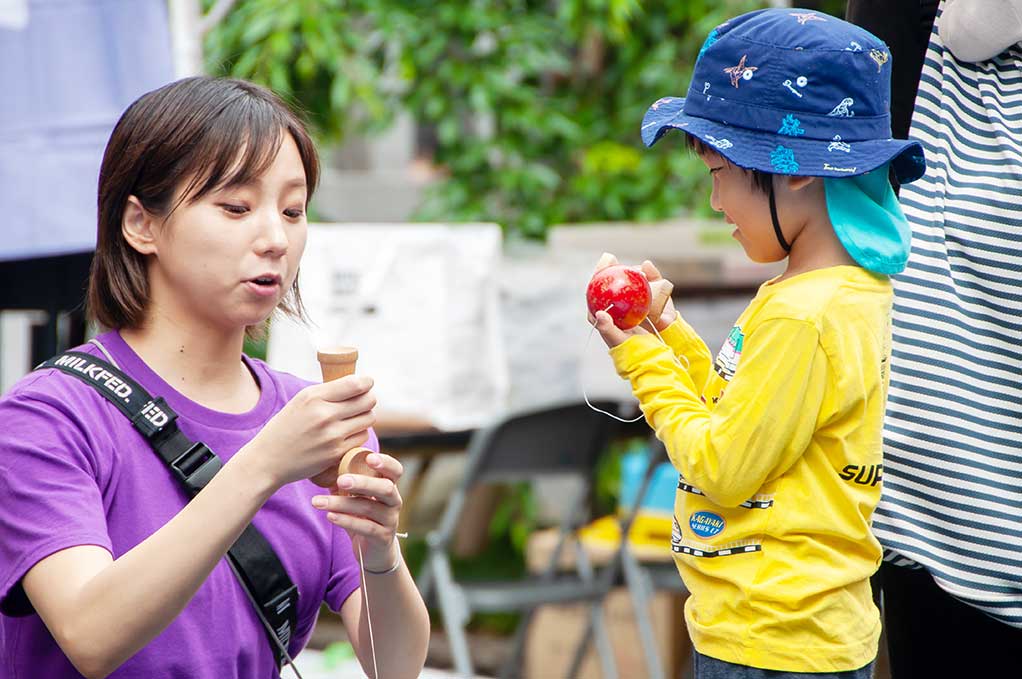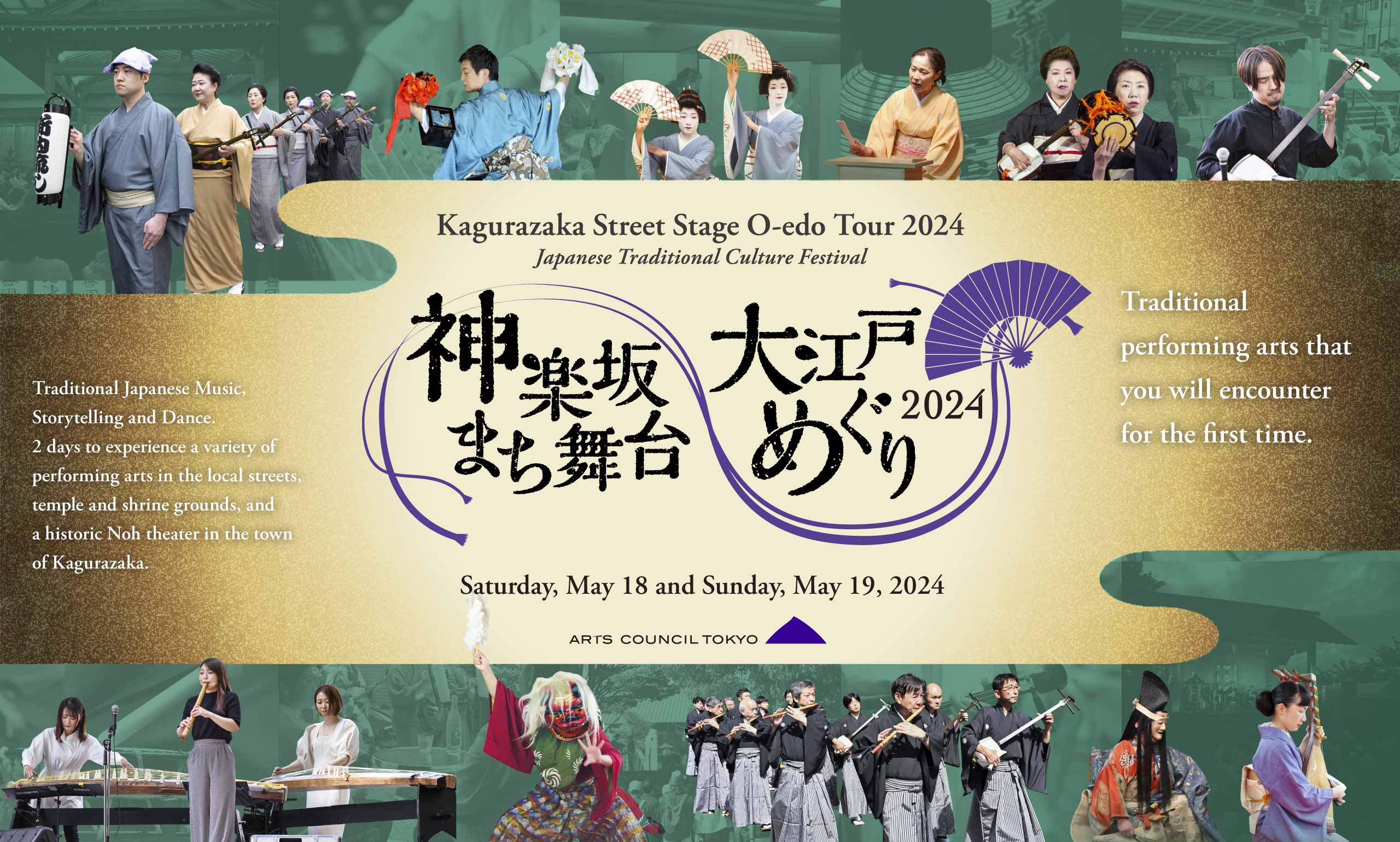Program
Saturday, May 18
“Kotohogi” Live Performance
The festival opens at Akagi-jinja Shrine’s modern Kaguraden stage located in Kagurazaka town. The energetic young dancers, who are the future of Japanese dance will perform “Fujimusume” and “Ninin-Sanbaso”, and “Hachioji Kuruma Ningyo”, designated an Intangible Cultural Asset by the city of Tokyo and an Important Intangible Folk Cultural Property by the Japanese government, will perform the festive dance “Kodakara-Sanbaso” and others which prays for peace under heaven and national tranquility, together with “Edo joruri” (traditional Japanese ballad drama) “Shinnai-bushi” music.
Saturday, May 18th
Venue Kaguraden Stage in Akagi-jinja Shrine
Starting at 13:00
Performance
Ichiyama Kou, Ichiyama Senyuu, Wakayagi Motohide (“Nihonbuyo” Traditional Japanese dance)
Starting at 15:00
Performance
Nishikawa Koryu troupe (Hachioji Kuruma Ningyo) × Tsuruga Isekichi, Tsuruga Iseichiro, Tsuruga Iseyoshi (“Shinnai-bushi” music), Tosha Chiho (“Hayashi” Japanese traditional percussion)
Tobaya Riseki (Navigator)
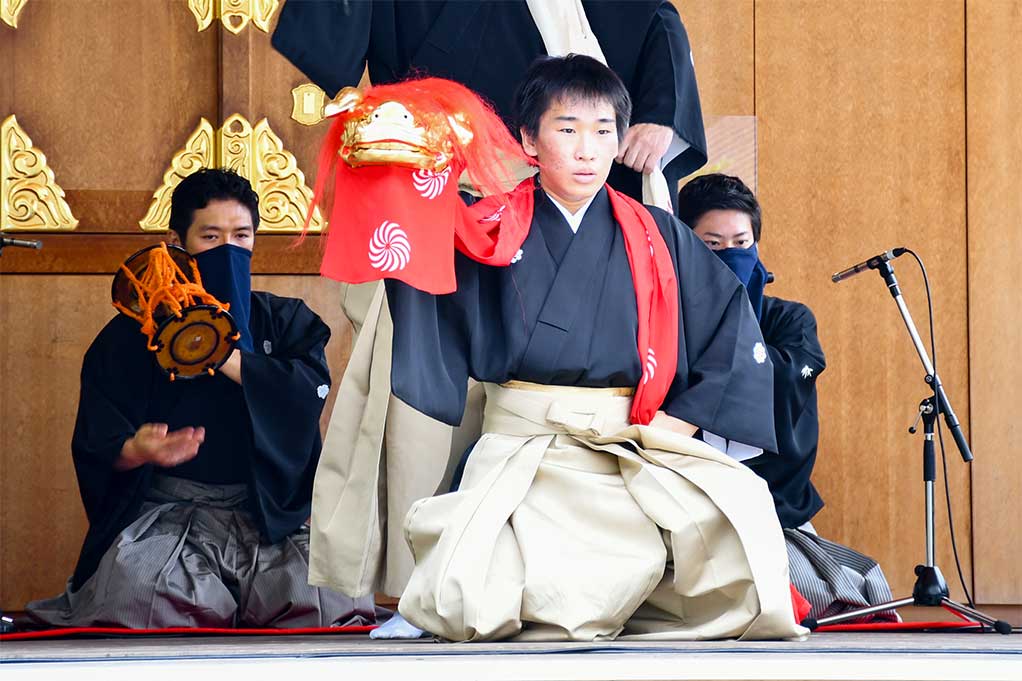

Kagurazaka Rakuza – Storytellers′ Theater
In the olden days, Storytellers’ Theaters were set up in the shrines and temples where people gathered, and were also a source of information and entertainment. The Storytellers’ Theater will be recreated at Bishamonten Zenkoku-ji Temple ground. In addition to “Koudan” storytelling, other traditional storytelling arts such as Joruri (“Gidayu-bushi” music), and “Rokyoku” storytelling will be performed. The easy-to-understand programs with explanations will be enjoyed by those who are new to the art of storytelling.
Saturday, May 18th starting at 13:30 / 15:30
Venue Special stage at Bishamonten Zenkoku-ji Temple
Performance
Kanda Matsumaro (“Koudan” storytelling)
Tamagawa Nanafuku, Sawamura Mami (“Rokyoku” storytelling)
Kanda Orine (“Koudan” storytelling)
Takemoto Koshiwaka, Tsuruzawa Tsugayoshi (“Gidayu-bushi” music)
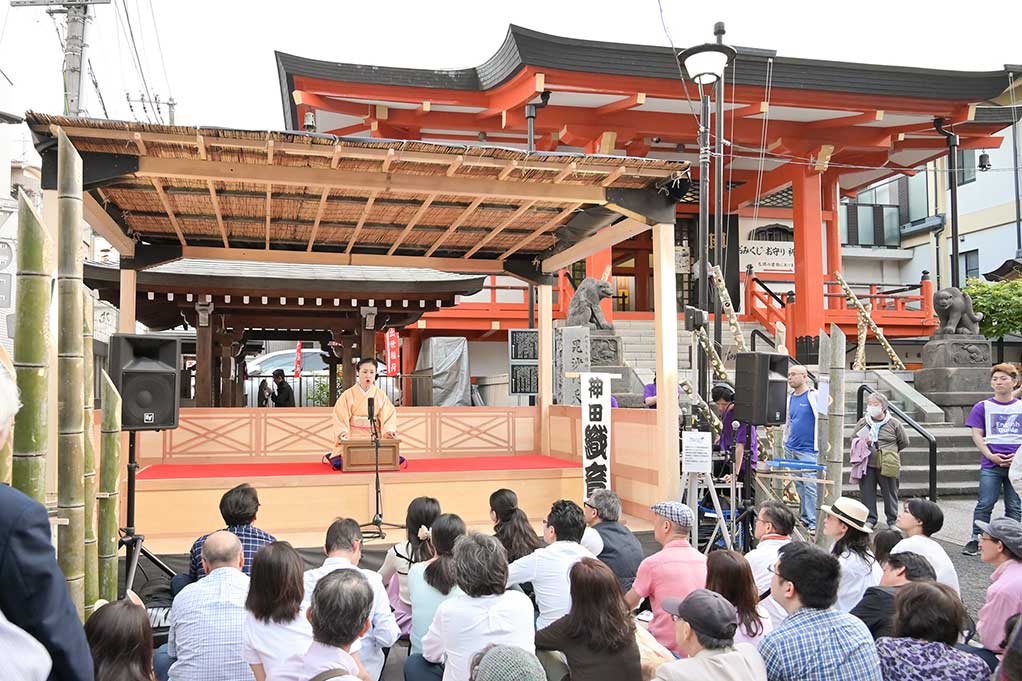
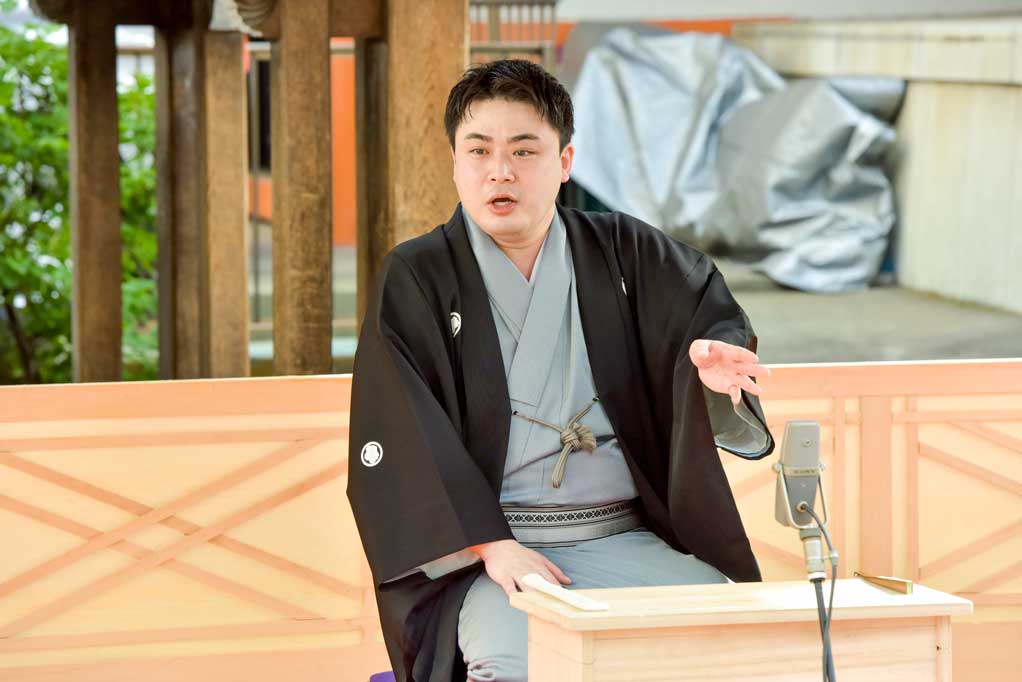
Geisha / Traditional Performing Artists Live Performance
This popular and unique program every year will be held in The Shoin (study room) at Bishamonten Zenkoku-ji Temple. In addition to singing, shamisen and dancing of the glamorous Kagurazaka’s Geishas, you can enjoy the atmosphere of “Ozashiki Asobi”, a unique Japanese form of hospitality by the world of geisha, all guests are welcome too. There will also be an up-close of “Tezuma” Japanese classical magic, and “Rakugo” storytelling, a form of Japanese comic storytelling that has been popular among the common people. Visitors can enjoy the atmosphere of both “Ozashiki games” and “Yose” (comedy storytelling).
Saturday, May 18th starting at 14:00
Venue Shoin (study room) at Bishamonten Zenkoku-ji Temple
Performance
Kagurazaka Geisha Ladies (Geisha / Traditional Performing Artists Live Performance)
Fujiyama Taiju (“Tezuma” Japanese classical magic)
Ryutei Koenshi (“Rakugo” storytelling)
Registration in advance
Accepted from 10:00 am Friday, April 26 through Tuesday, May 7
Reservation form : https://torioki.confetti-web.com/form/2928
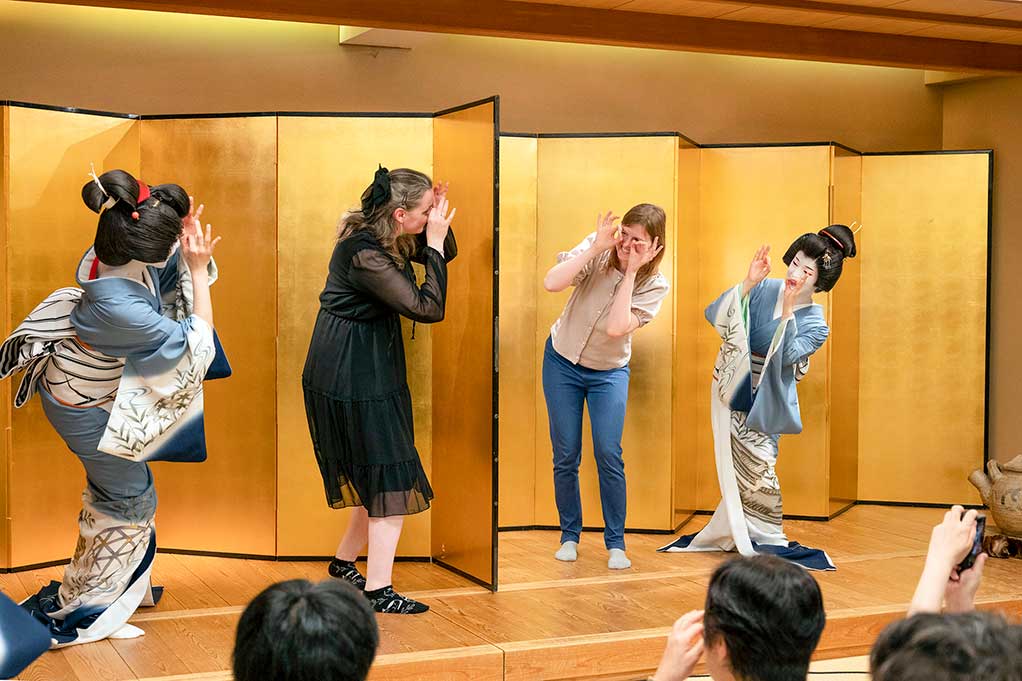
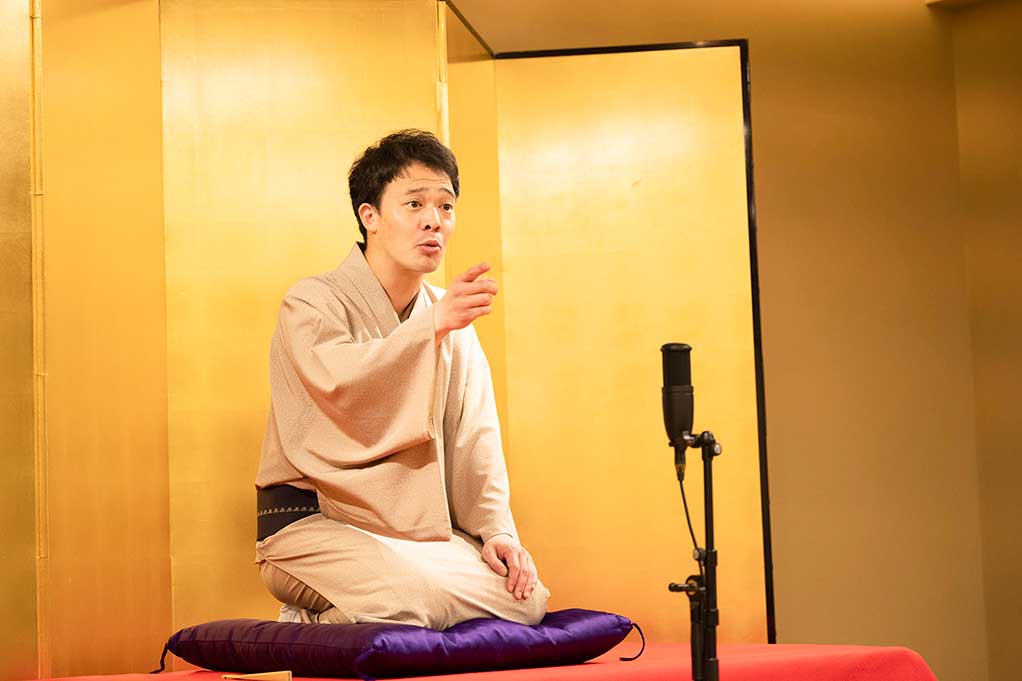
Traditional Performing Arts Past and Present
The program at Yarai Noh theater (a registered national tangible cultural property) will focus on the performing arts of the Edo period. In the first part, the Kanze Kyuko Kai will perform “Yoro Boshi (Weak Priest),” a masterpiece of Noh revived by the fifth shogun Tsunayoshi Tokugawa, with comments. The second part is titled “Too late to ask”, Ambassador Robert Campbell will join the talk and demonstration to explain the difference between “Tokiwazu-bushi” and “Kiyomoto-bushi” shamisen genre/tradition, both Kabuki music born in Edo Period.
Saturday, May 18th
Venue Yarai Noh theater
Starting at 13:00
Part 1: Noh revived in the Edo period
Performance
Kanze Kyuko Kai (Noh)
Starting at 16:00
Part 2: ‘Too late to ask’ series – Difference between “Tokiwazu-bushi” and “Kiyomoto-bushi” shamisen styles
Performance
Tokiwazu Waeidayu, Tokiwazu Chizutayu, Tokiwazu Kikuyoshiro, Kishizawa Masashi (“Tokiwazu-bushi” music)
Kiyomoto Shigemidayu, Kiyomoto Hisagotayu, Kiyomoto Taijuro, Kiyomoto Umemaruko (“Kiyomoto-bushi” music)
Robert Campbell (Guest)
*Numbered tickets will be distributed at the venue 90 minutes prior to the start of each show.
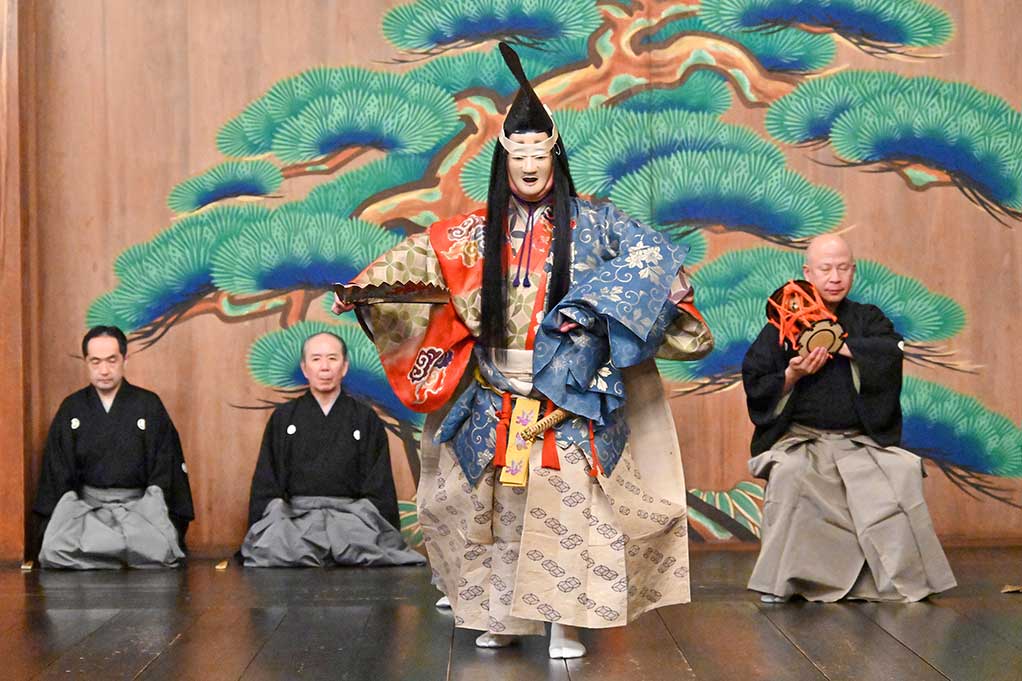
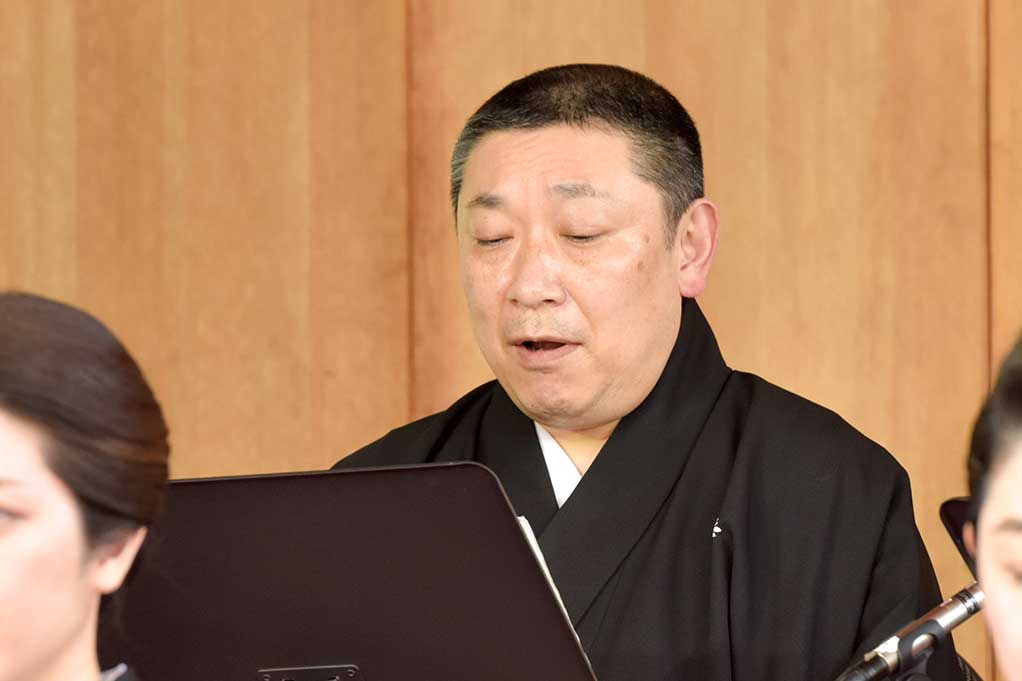
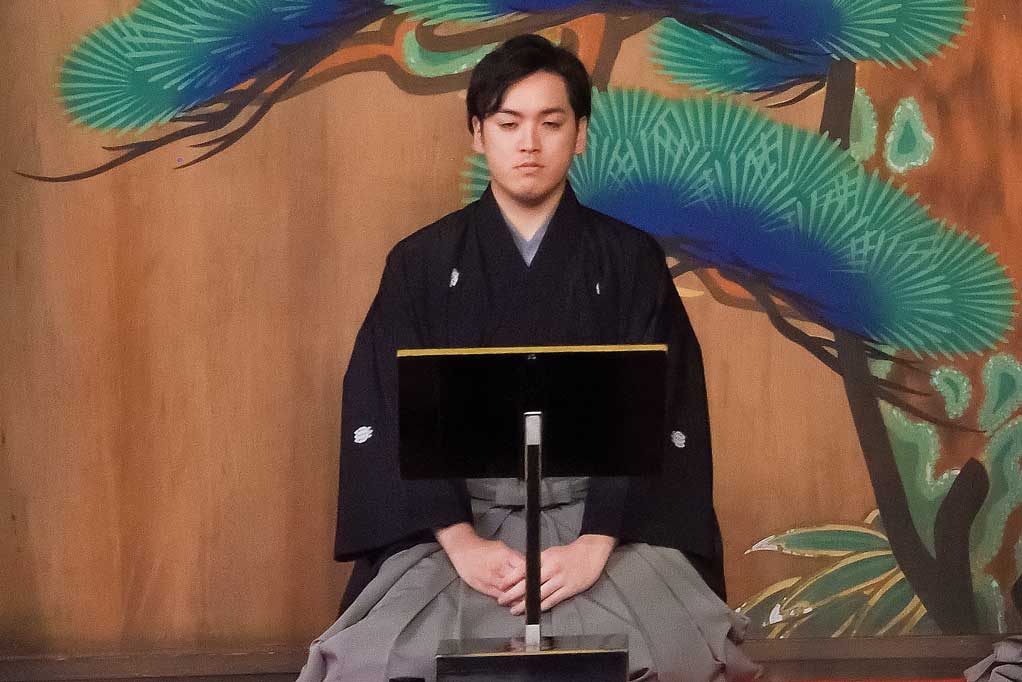
Street Performance – Shinnai Nagashi
The sound of shamisen music coming from a stone-paved alley. You come across “Nagashi performance”. The chic appearance of “Shinnai Nagashi” performed by National Treasure of Shinnai-bushi, Tsuruga Wakasanojo shamisen troupe will float you through the alleys and side streets of Kagurazaka. Listen to the melancholic tunes calmly.
Saturday, May 18th starting at 16:30 / 19:00
Venue Start from Jinai Park
Performance
Tsuruga Wakasanojo shamisen troupe (“Shinnai-bushi” music)
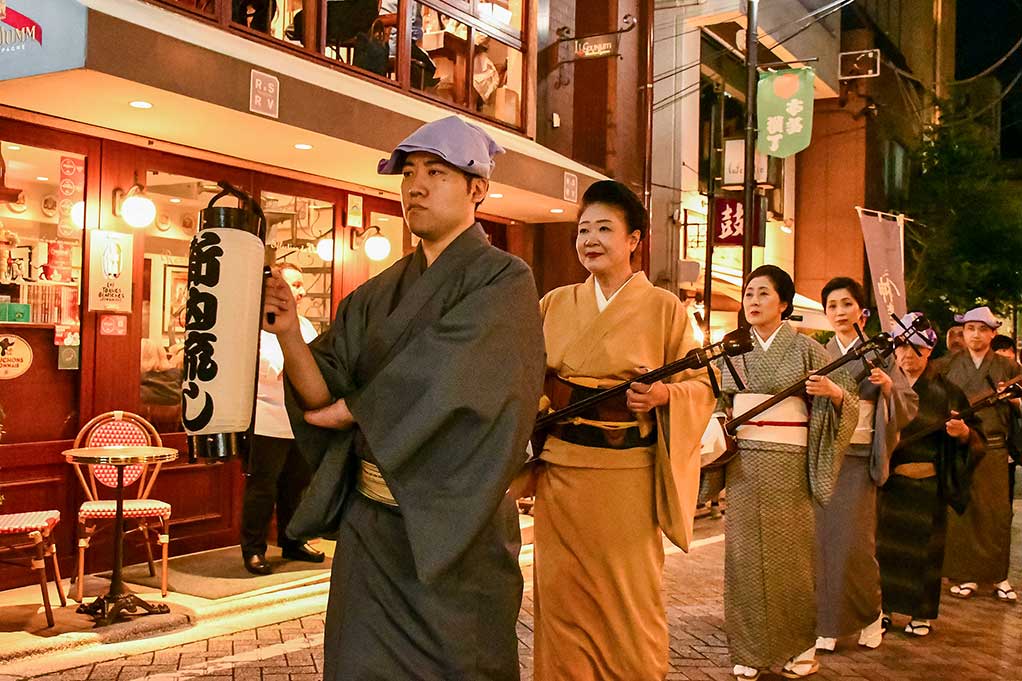
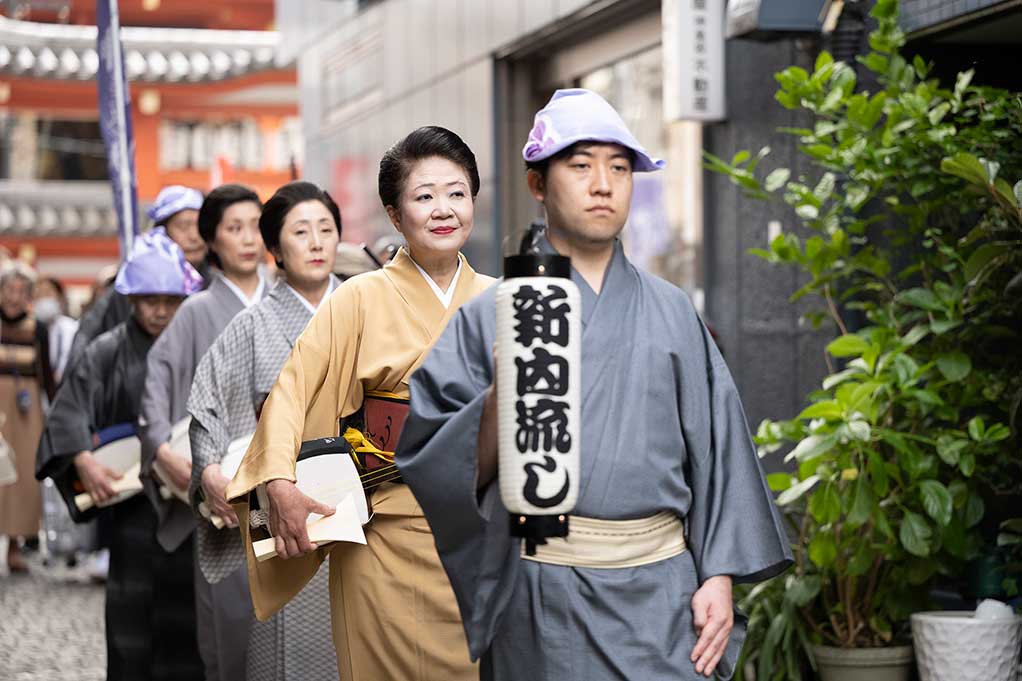
Street Performance – Johana Hikiyama Festival ‹Iori Uta›
“Edo-Hauta” music, which was introduced to Johana folk performing art of Nanto City, Toyama Prefecture, has been sung for 300 years as Johana Hikiyama Festival, Iori Uta in that area, and has been inherited as a unique culture. The “Iori Uta” has returned to Edo. The young men of Johana will parade through the back alleys of Kagurazaka with their shamisen, flutes, and singing , with the atmosphere of the Hikiyama Festival.
Saturday, May 18th starting at 17:30
Venue Start from Bishamonten Zenkoku-ji Temple
Performance
Houtetsu Kai (Johana folk performing art of Nanto City, Toyama Prefecture)
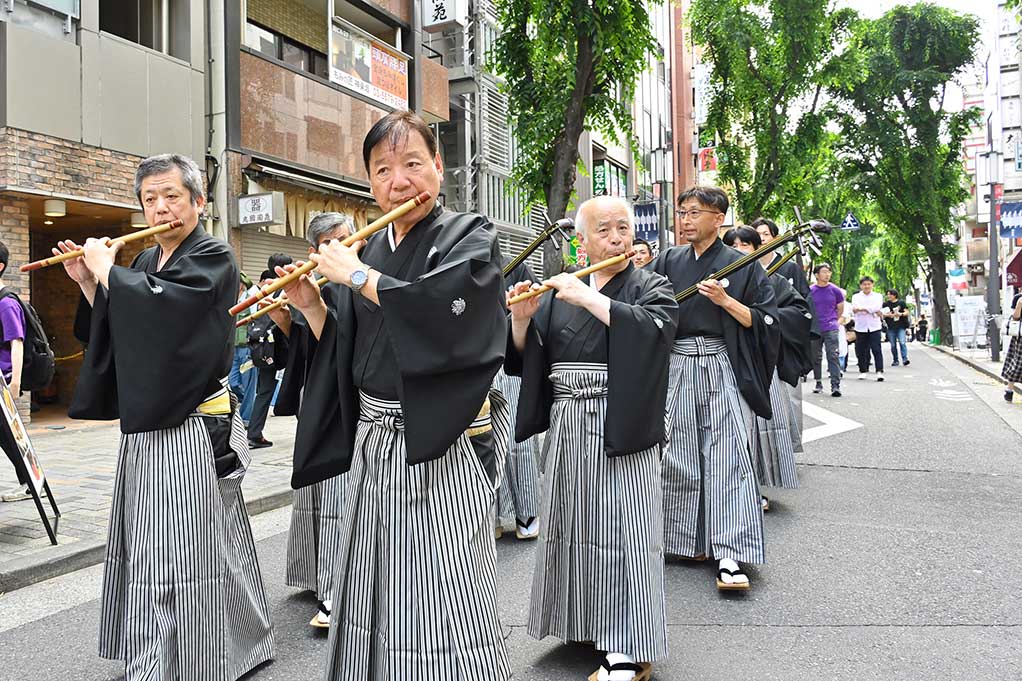
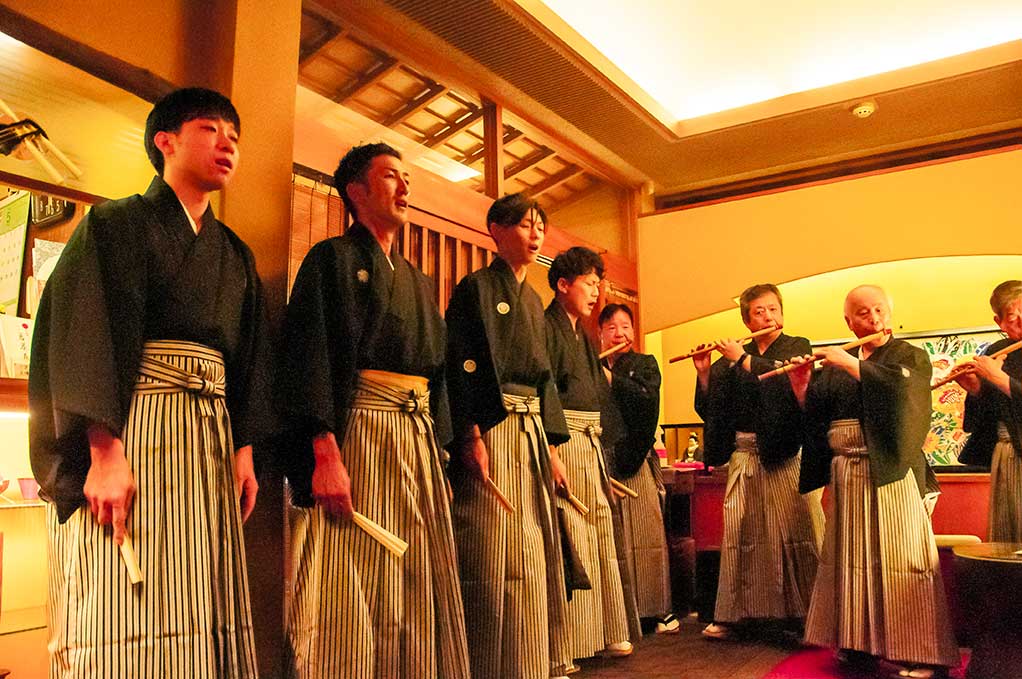
Bishamonten Zenkoku-ji Temple – Evening Concert
A variety of performance will move everyone’s hearts in this “evening party” that opens on the steps of the main hall of Bishamonten Zenkoku-ji Temple, illuminated by night lights. “Edo kyokugoma” (Edo-style spinning top), a popular performance at Yose, makes their first stage and performs breathtaking juggling tricks. Following this, the “Satsuma biwa”, known for its brave and powerful sound, will play and narrate a well-known story. Finally, Four shakuhachi players and a contemporary dancer collaborate in a performance and people can’t miss the sparks throughout their artistry.
Saturday, May 18th starting at 19:00
Venue Bishamonten Zenkoku-ji Temple Grounds
Performance
Mimasu Lemon (“Edo kyokugoma” Edo-style spinning top)
Kubota Akiko (“Satsuma biwa” Four or five-stringed Japanese lute)
Kominato Akihisa , Tajima Kenichi , Tanomura Soh , Yoshikoshi Eizan (“Shakuhachi” Bamboo flute) × Mademoiselle Cinema (Contemporary dance)
Robert Campbell (Guest)
Cyril Coppini (Navigator)
*Numbered tickets will be distributed at the venue 90 minutes prior to the start of each show.
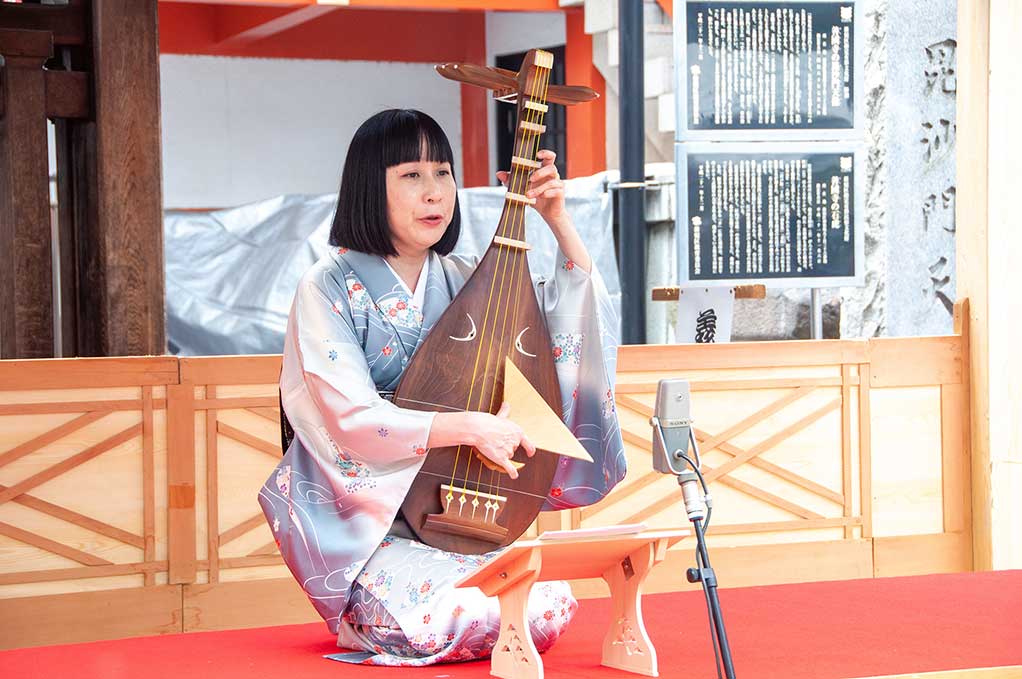
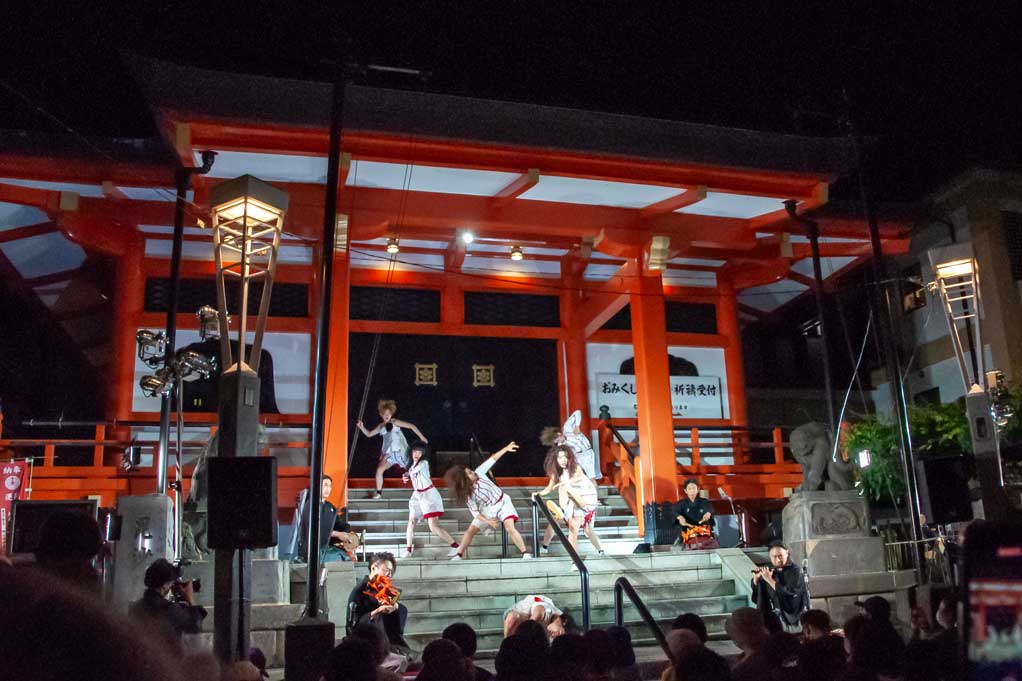
Kids’ Square
A place where families can enjoy traditional games such as “Beigoma” (Traditional Japanese spinning top) and Kendama, wooden blocks, and more, all while relaxing under the sky. Every year, this square attracts a large number of visitors.
Saturday, May 18th starting at 13:00
Venue Bishamonten Zenkoku-ji Temple Grounds
